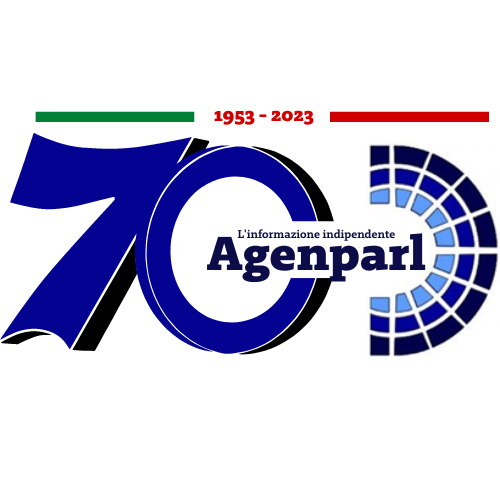 (AGENPARL) - Roma, 3 Aprile 2024
(AGENPARL) - Roma, 3 Aprile 2024(AGENPARL) – mer 03 aprile 2024 CERN PRESS RELEASE
The CMS experiment at CERN measures a key parameter of the Standard Model
cms.jpg
The CMS experiment (image: CERN)
With this measurement the LHC is again demonstrating its ability to provide very high-precision measurements and bringing new insights into an old mystery
The Standard Model of Particle Physics is the most precise description to date of particles and their interactions. Precise measurements of its parameters, combined with precise theoretical calculations, yield spectacular predictive power that allows phenomena to be determined even before they are directly observed. In this way, the Model successfully constrained the masses of the W and Z bosons (discovered at CERN in 1983), of the top quark (discovered at Fermilab in 1995) and, most recently, of the Higgs boson (discovered at CERN in 2012). Once these particles had been discovered, these predictions became consistency checks for the Model, allowing physicists to explore the limits of the theory’s validity. At the same time, precision measurements of the properties of these particles are a powerful tool for searching for new phenomena beyond the Standard Model – so-called “new physics” – since new phenomena would manifest themselves as discrepancies between various measured and calculated quantities.
The electroweak mixing angle is a key element of these consistency checks. It is a fundamental parameter of the Standard Model, determining how the unified electroweak interaction gave rise to the electromagnetic and weak interactions through a process known as electroweak symmetry breaking. At the same time, it mathematically ties together the masses of the W and Z bosons that transmit the weak interaction. So, measurements of the W, the Z or the mixing angle provide a good experimental cross-check of the Model.
The two most precise measurements of the weak mixing angle were performed by experiments at the CERN LEP collider and by the SLD experiment at the Stanford Linear Accelerator Center (SLAC). The values disagree with each other, which had puzzled physicists for over a decade. The new result is in good agreement with the Standard Model prediction and is a step towards resolving the discrepancy between the latter and the LEP and SLD measurements.
“This result shows that precision physics can be carried out at hadron colliders,” says Patricia McBride, CMS spokesperson. “The analysis had to handle the challenging environment of LHC Run 2, with an average of 35 simultaneous proton-proton collisions. This paves the way for more precision physics at the High-Luminosity LHC, where five times more proton pairs will be colliding simultaneously.”
Precision tests of the Standard Model parameters are the legacy of electron-positron colliders, such as CERN’s LEP, which operated until the year 2000 in the tunnel that now houses the LHC. Electron-positron collisions provide a perfect clean environment for such high-precision measurements. Proton-proton collisions in the LHC are more challenging for this kind of studies, even though the ATLAS, CMS and LHCb experiments have already provided a plethora of new ultra-precise measurements. The challenge is mainly due to huge backgrounds from other physics processes than the one being studied and to the fact that protons, unlike electrons, are not elementary particles. For this new result, reaching a precision similar to that of an electron-positron collider seemed like an impossible task, but it has now been achieved.
The measurement presented by CMS uses a sample of proton-proton collisions collected from 2016 to 2018 at a centre-of-mass energy of 13 TeV and corresponding to a total integrated luminosity of 137 fb^?1, meaning about 11.000 million million collisions!
The mixing angle is obtained through an analysis of angular distributions in collisions where pairs of electrons or muons are produced. This is the most precise measurement performed at a hadron collider to date, improving on previous measurements from ATLAS, CMS and LHCb.
Read more:
About CERN
CERN, the European Organization for Nuclear Research, is one of the world’s leading laboratories for particle physics. The Organization is located on the French-Swiss border, with its headquarters in Geneva. Its Member States are: Austria, Belgium, Bulgaria, Czech Republic, Denmark, Finland, France, Germany, Greece, Hungary, Israel, Italy, Netherlands, Norway, Poland, Portugal, Romania, Serbia, Slovakia, Spain, Sweden, Switzerland and the United Kingdom. Cyprus, Estonia and Slovenia are Associate Member States in the pre-stage to Membership. Brazil, Croatia, India, Latvia, Lithuania, Pakistan, Türkiye and Ukraine are Associate Member States. Japan and the United States of America currently have Observer status, as do the European Union and UNESCO. The Observer status of the Russian Federation and of JINR is suspended in accordance with the CERN Council Resolutions of 8 March 2022 and 25 March 2022, respectively.
Follow CERN at:
For more information, please contact:
CERN Press Office
______________________
CERN, Esplanade des Particules 1 P.O. Box, Geneva 23, . CH-1211 Switzerland
